MATERIALS AND CUSTOMISATIONS
LEATHERS
| Oak bark tanned bridle leather from traditional British tannery J & F J Baker for all baskets, trays, and all non-upholstered furniture |
|
||||||||
| European vegetable-tanned leather shoulders for all bins |
|
||||||||
| Olive-tanned upholstery leather from Leder Fiedler in Germany for any upholstered furniture |
Black Brown Tan |
||||||||
| British wild deer suede from Billy Tannery for any upholstered furniture |
|
||||||||
| Curly shearling sheepskin for any upholstered furniture |
|
FABRICS
Linen or linen/wool mix for all upholstered furniture in a variety of colors and articles
TIMBERS (from East Anglia and the rest of the UK)

|
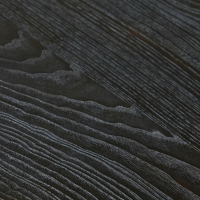
|
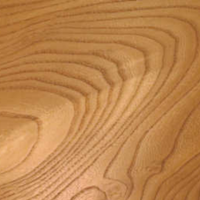
|
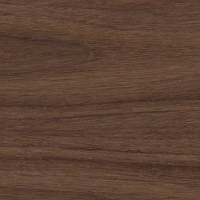
|
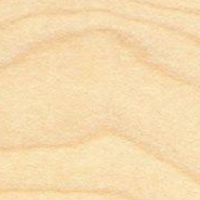
|

|

|
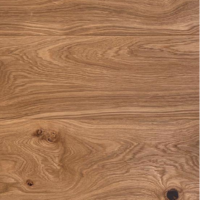
|
CUSTOMISATIONS
Please get in touch if you would like to discuss any bespoke colors or timber finishes. We are happy to use customer's own materials for upholstery.
We are happy to send out samples and sample packs. Please inquire if you would like samples sent to you.
CARE
These are our suggestions for how you can care for your Otzi pieces. If you have any questions at all regarding care and maintenance, please don’t hesitate to get in touch and we can advise you.
Leather
We use only the very best vegetable tanned and aniline dyed leather because it is superior quality and the most sustainable leather. Our preference is for natural and full grain leather that has been tanned to express the true expression of the material. Each hide is unique and will inevitably have small defects and markings that help build the character of the piece. Whilst the leather is checked and graded for quality and appearance both at the tannery and then again at our workshop they will never be perfect because they are natural materials that have not been subjected to aggressive processing or finishing This leather develops a patina over time with general use. As with many natural materials the leather will be especially affected by UV light and exposure to liquid. The lighter the leather the more susceptible it will be to these factors. Our leathers are relatively unfinished and as a result are easily impressionable. Marks can be buffed back and dents can be largely rubbed out as can scuffs. These will become part of the piece and will contribute to its character. If the leather is looking or too feeling dry, we recommend a neutral leather cream or balm such as carnauba cream. General use that does not damage the leather will enhance the appearance and feel of the leather over time. Oak bark tanned bridle leather is a very unique material. It takes over 12 months to tan and finish each piece, producing a leather that is incredibly strong and durable with a wonderfully soft finish and handle. A mix of natural waxes and oils are applied into the leather during the tanning process. These waxes often come to the fore with temperature change; this is called ‘bloom’ and looks like white or translucent clouding. Bloom will often occur during shipment, especially by air which is very cold. It is a hallmark of the best hand made leathers. To get the leather back to the original colour you just need to buff out the bloom with a medium stiff brush and dry microfibre or cotton cloth. After a little while this effect will go away entirely. Leather can be dusted or vacuumed or wiped with a lint free cloth. Any spillages can be contained or mitigated by wiping the whole affected panel(s) with a very lightly damp cloth and then left to dry. When dry, apply a neutral leather cream or balm to the whole panel then buff back.
TIMBER
Our furniture celebrates the natural beauty of wild grained native timbers. We tend to showcase them by putting the frame work on the outside of the pieces. As such it should be maintained and protected from certain variables such as light and heat. If possible keep the pieces away from direct sunlight, or open heat sources such as fireplaces or radiators to prevent the timber from cracking or warping. We finish all of our furniture with either a plant-based bio-oil and wax or natural Danish oil as they bring out the beauty of the grain and are easy to maintain. They can be wiped with a cloth or dusted with a small vacuum with a brush head. Any scuffs can be sanded and the finish reapplied.
FABRIC
We recommend cleaning regularly to maintain the fabric and keep it looking its best. Use an upholstery or soft bristle brush or vacuum with a brush head attachment. All cushion covers can be machine washed cold but we recommend dry cleaning for a more reliable outcome. Keep dyed fabrics out of direct sunlight to prevent discolouring.
OTZI is committed to sourcing the finest leathers and materials, predominantly natural materials that are regenerative and sustainable. We believe that in using the best materials available, not only do the pieces realise their full potential aesthetically, they also function better and longer. Our pieces are hand-crafted and take hours of patient work to achieve, and are a real investment for our clients. With this in mind we feel that the materials should only be the best in order to honour the quality of our workmanship and to give the piece true durability. Ultimately, we are guided by our belief that natural and sustainable materials have intrinsic beauty and idiosyncratic characteristics that synthetic materials cannot produce. Coupled with timeless design, they produce objects and pieces that will, with careful use, last and improve over a lifetime.
Vegetable-Tanned Leather
LEATHER
We employ predominantly pit- and vegetable-tanned leather from the UK and Europe. Pit-tanning has been practised in Europe and the UK for hundreds of years and is used by only a remaining handful of tanneries. It produces a superior leather with great tensile strength and durability, whilst keeping the beauty of the full grain on the surface. It involves grinding the bark from either oak or chestnut trees and creating a liquor, much like a tea. The hides are soaked in liquors of increasing strength for 3 months before being layered amongst scattered bark powder for 9 months. After this lengthy process they are soaked in greases and fat liquors before drying, hand dying, and finished with dubbin. All of these waxes, tallows, and fats are totally natural. The fact that the tree bark, the leather hide itself and the tanning and currying materials are all byproducts from the timber and meat industry makes this leather some of the most environmentally friendly and sustainable available today.
We have a strong relationship with Britain's last remaining oak bark tannery, J & F J Baker, https://www.jfjbaker.co.uk/, in Devon. Their oak bark tanned bridle leather is amongst the strongest and most sustainably produced leather anywhere in the world, taking hides from nearby pasture-fed cows and creating an incredible material almost entirely processed by hand.
We also use traditional European vegetable-tanned leather which uses many of the same processes as the oak bark tanning but on a shorter timeframe. It is still a very sustainable material and much of the character and strength is maintained in the leather. Vegetable tanned leather is usually aniline dyed, unfinished, and therefore quick to impression and mark - however these marks can be buffed out. Over time they will balance out alongside other markings that become part of the unique wear of the piece. We don’t use heavily pigmented or even semi aniline leathers that may appear cleaner and more pristine for longer because this comes at a cost to the finish, natural character and wear and those leathers tend to age poorly. All of our pieces are made to endure; we are confident they will look great decades after they were made. We therefore use olive-tanned leathers for our upholstery, which is a new method of tanning hides. It is incredibly sustainable as it uses leaves taken as a byproduct from the olive industry, which are would otherwise be burned. The hides that result are warm and gentle to the touch and can be produced in a range of colours and finishes.
Make it stand out
TIMBER
All of the timber we use for our furniture is sourced locally from East Anglia and the South East of the UK. We work with local forest management to take timber from trees that have been either storm felled or taken down for development purposes. We work with most native timbers such as ash, oak, sycamore, elm, chestnut, beech and plane. Where they don’t impede structural integrity, we choose to keep the imperfections in the timber, utilising the amazing grain and striking character wherever possible.
Make it stand out
LINEN
We upholster our pieces in linen for a variety of reasons. Visually it has a lovely uneven slubby texture that suits our aesthetic. It also ages very well, getting softer with age and has a durability and toughness in keeping with the leathers and timbers we make our pieces from. As with our other core materials, linen is an inherently sustainable fabric that uses less water than cottons and can be grown in poorer quality soils.




















